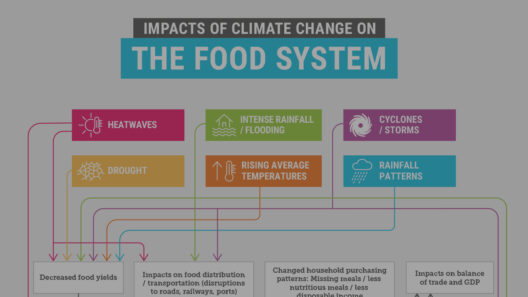Japan, an archipelago that stretches like a delicate brushstroke across the Pacific, is a land where nature’s whims play a constant, lively symphony. This unique nation experiences a climate characterized by its four distinct seasons, each marked by striking contrasts and phenomena that define the cultural and ecological fabric of the country. From the vibrant hues of spring’s cherry blossoms to the tumultuous storms of typhoon season, Japan’s climate is a living narrative of beauty, resilience, and change.
Spring emerges like an artist unveiling a masterpiece. As winter retreats, the landscape is adorned with a soft pink blush as cherry blossoms, or sakura, bloom in a breathtaking display. The ephemeral nature of these flowers symbolizes renewal and transience, a poignant reminder of life’s fleeting moments. When the sakura showers cascade down like pink snowflakes, they envelop the land in a gentle embrace, drawing inhabitants and travelers alike to parks and temples for hanami, the cherished tradition of viewing cherry blossoms. This seasonal spectacle ignites a sense of unity, as people gather under the blossoming trees, sharing food, laughter, and stories against a backdrop of nature’s splendor.
Transitioning into summer, Japan transforms dramatically. The air thickens with humidity, and bursts of vibrant green characterize the countryside. The sun, situated high in the sky, bathes the landscapes in a golden glow, inviting the languid pace of summer festivals. The ozone-laden air fills with the tantalizing aroma of street food vendors, offering mouthwatering specialties such as yakitori and takoyaki, while the distant sound of fireworks punctuates warm evenings, igniting the sky with bursts of color. Yet, beneath the surface allure, summer also heralds an impending tempest. Thunderstorms roll in from the ocean, rattling windows and drenching the earth in torrential downpours.
As summer wanes, the transition into autumn is like the slow, graceful descent of an aging dancer, adorned in a tapestry of red, orange, and gold. The koyo—the stunning fall foliage—transforms mountainsides into kaleidoscopes of colors that draw both nature enthusiasts and photographers. This profusion of colors is not merely a visual phenomenon but a deep-rooted cultural experience that invites contemplation as one strolls through parks and temples. The harvesting of crops, particularly rice, echoes the rhythm of life, connecting people to the land. It’s a moment of gratitude, a nod to the cycles of nature that sustain life.
However, autumn is not without its moments of tumult. As the season turns, the specter of typhoons looms. The maritime forces of nature converge upon the archipelago, unleashing powerful winds and relentless rains that can wreak havoc in vulnerable communities. The fear of flooding and landslides can cast a shadow over the vibrant autumn, showcasing the duality and unpredictability of Japan’s climate. Yet, amidst adversity, communities display resilience, coming together to support each other, embodying the spirit of ‘wa’—harmony— that permeates Japanese culture.
As winter descends, the atmosphere changes profoundly. Snow blankets the landscape in a hushed white shroud, transforming familiar terrains into winter wonderlands. Traditional onsen (hot springs) teem with locals seeking warmth, their breaths visible in the crisp air. Winter in Japan has a magic that is palpable: the soft crunch of snow underfoot, the serene stillness that accompanies a snowfall, and the ethereal beauty of snow-covered temples and shrines. Festivals celebrating the season, such as the Sapporo Snow Festival, capture the imagination with intricate ice sculptures and snow mazes. Winter evenings are often spent indoors, sipping warm cups of sake while gazing out at an enchanting snowy scene—making it a season of introspection and warmth.
However, winter also brings challenges. Heavy snowfall can lead to disruptions in daily life, especially in the northern regions where the snow accumulates, creating obstacles in transport and logistics. The resilience of the Japanese people shines through these trials; innovative solutions emerge as communities adapt to nature’s designs. Snow removal technologies, timely disaster management systems, and a deep-rooted respect for nature’s power are clear indicators of how climate shapes societal practices.
In essence, Japan’s climate tells a tale of duality—where beauty coexists with strife, and tradition mingles with innovation. Each season is a chapter, revealing the intricacies of an environment that is both nurturing and demanding. The unpredictable storms serve as a reminder of nature’s might, while the delicate sakura embodies the gentle, enduring spirit of renewal. Through this ceaseless dance of seasons, Japan invites its inhabitants to embrace the manifold expressions of life—celebrating each moment, impermanence, and the cyclical patterns that define existence.
The relationship between the people and their environment in Japan is an intricate tapestry woven with threads of respect, adaptation, and reverence. In acknowledging the diverse climate, one understands that it shapes not only the physical landscape but also the cultural identity and consciousness of its people. As Japan continues to navigate the challenges posed by climate change, the art of living harmoniously with nature will remain an enduring legacy, a steadfast ethos in a world of constant transformation.





